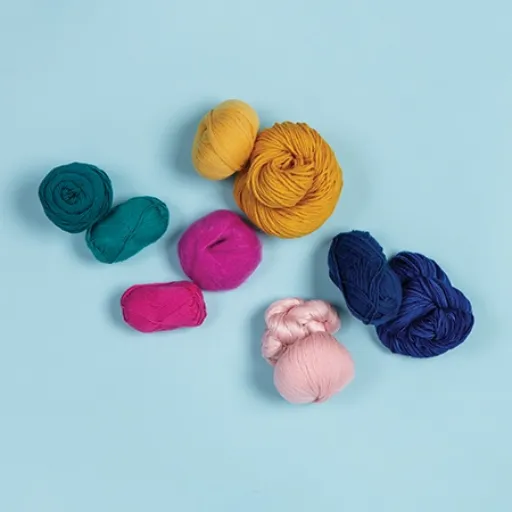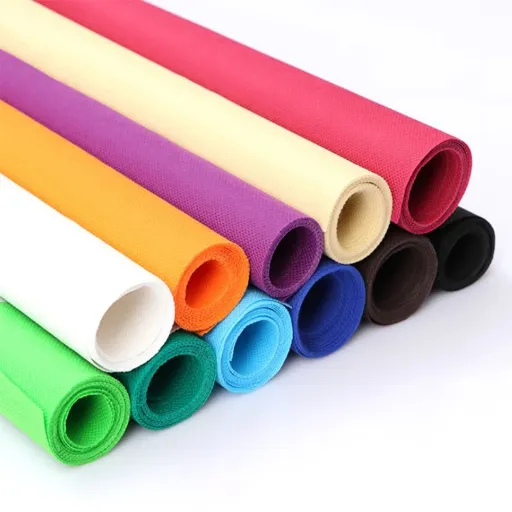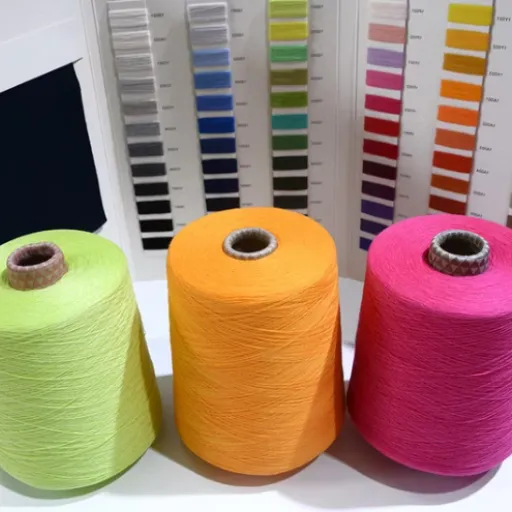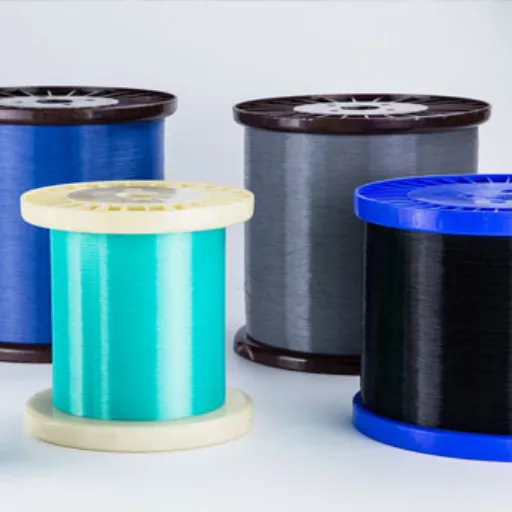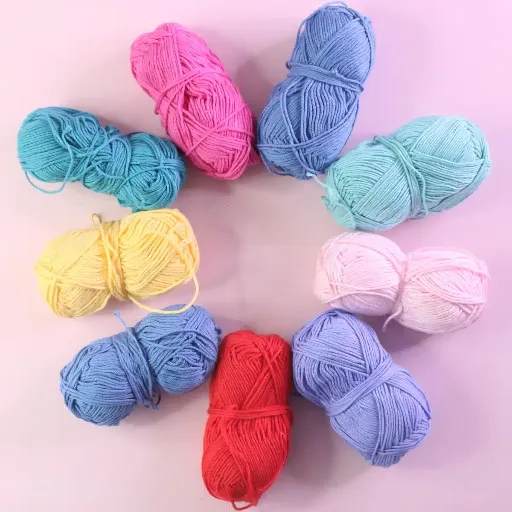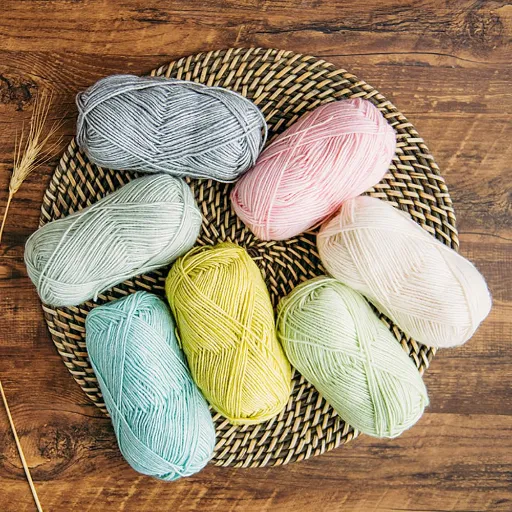With your little one, it feels like every choice is a big one, especially the ones about which fabrics to use and the ones related to comfort, health, and safety. One of the hardest decisions for parents is to pick the right material for their children’s clothes, bedding, and accessories, and this is often thought of as a multifaceted issue. One of the most common fabrics, polyester, has been around for a long time because of its low price and wide range of usage but what about your baby’s gentle skin—it is safe? This article will discuss the good and bad sides of polyester as well as its safety and suitability for infants. At the end of the article, you will be able to see if polyester is a part of your baby’s wardrobe or nursery or not, also you will get to know the other fabric options.
Understanding Polyester and Its Use in Baby Products
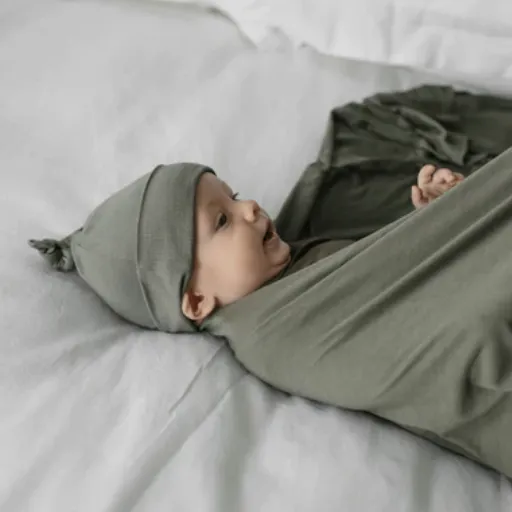
What is Polyester?
Polyester is a synthetic fabric derived from petroleum products, particularly a type of polymer called polyethylene terephthalate (PET). The whole process of making polyester involves several steps namely refining petroleum, spinning of PET into fibers, and lastly the weaving of these fibers into fabric. The polyester fabric is appreciated for its strength, lightness, and for not shrinking and wrinkling issues.
This substance is heavily applied to the production of clothing, home decor, and baby items such as blankets, sleepwear, and plush toys. Polyester is a preferred material for manufacturers due to its lower cost, easy upkeep, and wide range of applications among others. Also, it is a good dye holder, which makes it suitable for the manufacture of items that require vivid designs or patterns.
On the other hand, polyester presents a drawback when it comes to sensitive skin, particularly that of infants. Polyester is not as good at letting air circulate as cotton or linen, thus it can become hotter and uncomfortable if the baby is sweating. In spite of this, polyester is frequently mixed with other fabrics to enhance its softness and functional quality while keeping its practicality in terms of cost, durability, and resistance to washing.
Common Uses of Polyester in Baby Clothing and Bedding
Polyester is a commonly used material in baby clothing and bedding due to its strong and cost-effective nature. It is often found in combination with cotton and other natural fibers, which offer the softness and breathability of natural materials along with the strength and wrinkle resistance of polyester. This results in a very practical fabric for daily use, especially in the case of items like onesies, bibs, and baby socks that need to be washed frequently.
Polyester besides its durability is also a favorite material for baby blankets and crib sheets. These products have the benefit of maintaining their shape and color due to polyester even after numerous washings, thus keeping them both functional and visually appealing. Fiberfill, another product made of polyester, is commonly used as filling in baby comforters and pillows as it gives a lightweight yet warm feel.
Polyester’s hypoallergenic characteristics are another reason why it is considered a good material for baby products. It does not allow the growth of mold, mildew, and dust mites, and hence contributes to keeping the environment clean and healthy for infants. Polyester is not as breathable as some of the natural fibers, however, its blending with other materials helps to overcome this shortcoming while still keeping its durability and easy-to-care-for properties. This makes polyester a very flexible and cost-effective choice for a wide range of baby clothing and bedding needs.
The Environmental Impact of Polyester Production
Polyester production is an environmentally costly operation, with fossil fuels being the main culprit of its impact. The cloth fabric or yarn made from polyester is essentially from oil, which is a non-renewable resource, and the whole process consumes a lot of electricity that further leads to the emission of greenhouse gases. Thus, polyester turns up as one of the top synthetic textiles in terms of carbon footprint marring.
A looming issue also is the washing process of polyester fabrics, which leads to the release of microplastics. This means that small plastic particles go into rivers and oceans leading to the death of marine life and later becoming part of the food chain. The environmental impact of microplastics is not yet fully understood as research is still going on, but their existence certainly implies major threats to nature and human health alike.
Moreover, textile waste from polyester is a problem with its longevity, as it would take many hundreds of years for the material to completely decay. The landfills that have the mismanaged polyester waste are a cause of environmental degradation not only in the local areas but also around the globe. The pollution problems associated with polyester have prompted various moves, including the investigation of recycling methods and the search for new raw materials, but these are yet to be implemented on a wide scale. It is inevitable that the resolution of the environmental problems revolving around the polyester industry will need the combined efforts of all the stakeholders – industries as well as consumers – to work together.
Potential Risks of Polyester for Babies
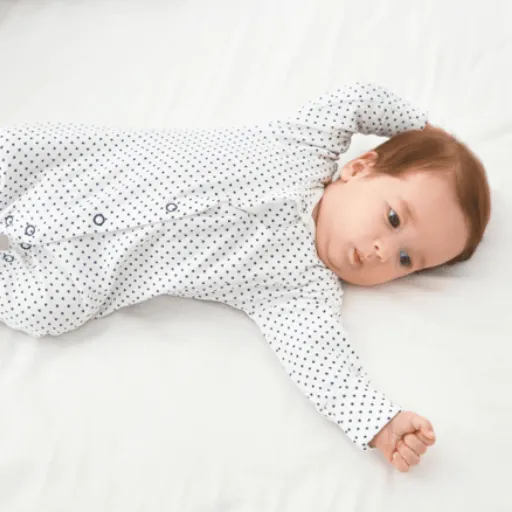
Breathability Concerns and Overheating
Due to its synthetic character, polyester can be the source of breathability problems for babies. Unlike natural fibers like cotton or wool, polyester is not very good at letting air pass through it. This situation can cause a baby’s body heat to be trapped, thus leading to the discomfort of the baby and even overheating which is a serious risk in such environments that are warm or hot. Babies are particularly at risk of overheating because their bodies still lack the maturity needed for proper temperature regulation.
Overheating can cause heat rashes in babies, result in dehydration, and make them irritable. Moreover, being in a hot environment for a long time can cause more serious health problems like heat exhaustion or Sudden Infant Death Syndrome (SIDS), and so on. Parents and caregivers are advised to use materials that breathe well for baby clothes, bedding, or swaddling in order to minimize these risks.
In response to these concerns, it is important to choose materials that are lightweight, breathable, and safe for a baby’s delicate skin. Instead of synthetics, natural fibers like cotton should be preferred as they facilitate better airflow and keep the baby cooler. Moreover, caregivers should constantly assess the comfort level of the baby, dress him/her in layers that are suitable for the temperature, and give enough water to drink. These actions can combine to provide the baby with the same protection and comfort as if he/she were in a different environmental condition.
Skin Sensitivity Issues: Rashes and Contact Dermatitis
Rashes and contact dermatitis are routine skin sensitivity issues in infants, usually brought on by skin irritation, allergy, or continuous exposure to wet conditions. These skin problems can mean a variety of things: redness, dryness, or little bumps on the skin, all leading to the baby being uncomfortable. Factors like harsh detergents, fragrant products, or rough materials can worsen these problems, thus making it extremely important for babies to have their sensitive skin protected.
To keep the baby free from rashes and contact dermatitis, the caregiver must always use hypoallergenic and fragrance-free products like soaps, laundry detergents, and moisturizers. Changing the diaper often can limit the baby’s contact with moisture thus preventing diaper rash, plus keeping the baby’s skin clean and dry before applying barrier cream. Again, using soft, breathable fabrics like cotton for baby clothes can help in reducing irritation.
In the event that the rashes do not go away or get worse, it is of utmost importance to seek the advice of a pediatrician or dermatologist. They could suggest particular soothing therapies or light medications to reduce the signs. Quick intervention of the skin sensitivity issues will not only save the baby from further discomfort but also facilitate the maintenance of healthy and protected skin.
Harmful Chemicals in Polyester Fabrics
Polyester fabrics sometimes have significant health risks attached to them due to the presence of harmful chemicals. The making of polyester entails the use of synthetic polymers got from crude oil, and that might result in the escaping of volatile organic compounds (VOCs) and other toxic substances into the air. Skin irritation, breathing difficulties, and, in the worst cases, the creation of chronic medical conditions are some of the problems that can legally be caused due to these chemicals. Wearing polyester clothing can be very uncomfortable at times, especially for people who have delicate skin, as it does not allow the body to breathe the way natural fibers do.
Chemical treatments are one of the main problems associated with polyester. Polyester is frequently treated with flame-retardants, dyes, and solar-zeri weatherizing agents, whose final product often contains chemicals like perfluorinated compounds (PFCs) or formaldehyde. These substances have been cited to cause health issues, such as allergic reactions and hormone imbalance. Besides, the concern that these chemicals could actually leach out during the wearing or washing of the garment is indeed true, which makes the problem even more serious since it not only affects personal health but also the ecosystem.
One way to deal with this situation is to be selective in making a wardrobe consisting of clothing from natural and organic fibers such as cotton, hemp, or bamboo. Moreover, washing new polyester clothes before wearing and limiting the duration of time one stays in them can all help in reducing the possible release of toxic chemicals. Opting for sustainable and non-toxic fabric alternatives guarantees that the choice made would be of the safest and healthiest kind not just for the individuals but also for the environment.
Comparative Analysis: Polyester vs. Other Fabrics

Polyester vs. Organic Cotton: Pros and Cons
Summary Table:
|
Feature |
Polyester |
Organic Cotton |
|---|---|---|
|
Durability |
High |
Moderate |
|
Breathability |
Low |
High |
|
Cost |
Low |
High |
|
Environmental Impact |
High (non-degradable, pollution) |
Low (biodegradable, eco-friendly) |
|
Microplastic Pollution |
Yes |
No |
|
Water Usage |
Low |
Moderate |
|
Carbon Footprint |
High |
Low |
By weighing these factors, consumers can make informed decisions based on their priorities, such as environmental impact, cost, or durability, while also advocating for greater sustainability in the textile industry.
Bamboo vs. Polyester: Which is Better for Sensitive Skin?
When dealing with delicate skin, bamboo fabric is usually preferred over the polyester variety. The smoothness and natural softness of bamboo fabric do not cause much irritation or friction between the skin and fabric. Besides, it is hypoallergenic so less likely to cause allergic reactions, thus being a more comfortable option for people with sensitive skin. Moreover, bamboo fabric has great moisture-wicking ability, thus keeping the skin dry and reducing the chance of discomfort due to sweat accumulation.
On the contrary, polyester is a man-made fiber that is not so friendly to sensitive skin. The texture may sometimes feel rough as compared to natural fibers such as bamboo, and it cannot claim the same hypoallergenic property as bamboo fabric. The polyester also has the tendency to trap heat and moisture thus causing irritation or discomfort to those with skin sensitivities especially in hot or humid conditions.
In conclusion, the attributes of bamboo such as natural softness, hypoallergenic and comfortable-across-all-conditions made it the clear winner over the fabrics tough polyester that can only be used in limited applications. Meanwhile, individuals with sensitive skin or those who desire maximum comfort will benefit more from bamboo-based products while polyester can still cater to the needs of some consumers due to its durability and low prices.
Durability and Cost-Effectiveness of Different Fabrics
When considering the durability and cost-efficiency of bamboo and polyester fabrics, some crucial differences should be considered. Polyester is recognized and known for resilience and long-lasting qualities. It does not shrink, stretch, or wrinkle, thus making it an excellent alternative for those items expected to endure heavy use or washing. Some recent data in the industry prove that polyester garments may remain for several years with the right care, which makes them fairly cost-efficient despite the fact that they are synthetic.
Bamboo fabric, meanwhile, is somewhat softer and a little better for the environment but unfortunately less durable. Over time, bamboo clothing will certainly start to wear if it is washed very often. However, recent advances in textile technology have led to the development of bamboo blends that enhance the durability of the fabric while also maintaining its hypoallergenic and breathable characteristics.
On-the-note of costs, polyesters are mostly cheaper to make and procure because they are technically synthetic and can be manufactured at scale. The present-day market prices mention on an average of $5 per yard for polyester while the more complex processing of bamboo-related production results in it often costing more than $10-$15 per yard.
In the end, the decision between these fabrics depends on its usage. Polyester would certainly offer longer durability and better price for whoever would like to save on that aspect. In contrast, the bamboo has a strong conscious appeal for those searching for an environmental consciousness, comfort, and softer retail feel.
Expert Opinions on Polyester Safety for Babies

Pediatricians’ Insights on Infant Health and Fabric Choices
Choosing the fabrics for the infants is generally considered important by the pediatricians for their health and comfort. It is strongly recommended for babies to wear soft, breathable, and hypoallergenic fabrics in order to prevent skin irritation and to assist with temperature regulation. Polyester, being durable and inexpensive, might sometimes retain heat and moisture, thereby causing discomfort and skin sensitivity to some infants.
Behaviorally, keep in mind that when using polyester clothing or bedding for the baby, layering of garments is essential, along with a few other precautionary measures. If polyester is to be worn by a baby, it would be best to layer it with natural fabrics such as cotton that will breathe well and thus reduce any heat that might build up between layers. Also, warn parents that clothes and bedding made from synthetic fibers should be washed with resurgence-free detergents so as to minimize any risk of skin irritation.
In essence, many experts highlight natural fibers for priority, mainly for infants with sensitive skin or specific allergies. Generally, polyester does not cause any problems for most babies; however, parents should observe how their infants respond to particular fabrics and adjust their choices if they notice any signs of discomfort or irritation. Also, consulting with a pediatrician will help them make the best fabric decisions for an infant.
Dermatologists’ Perception of Skin Conditions
Knowing basic skin conditions and their consequences on health and well-being is held as a priority among dermatologists. Skin issues like eczema, diaper rash, or dry skin are mostly common in infants due to their very sensitive and developing skin. For the most part, these conditions may be taken care of with just skincare and gentle hypoallergenic products. Avoidance of irritants plus regular moisturizing can be considered more of prevention.
For eczema, red itchy patches appear on the skin, with allergens, irritants, or temperature changes being the usual culprits. Dermatologists advise that one should try to discover and avoid any triggers to the condition while also helping the skin maintain its moisture barrier with appropriate emollients. Similarly, a diaper rash is usually caused by the skin being in contact with moisture or irritants from the diaper for too long. Proper care for the condition involves frequent diaper changes; applying barrier creams to protect the skin; and making sure that the skin is kept clean and dry.
If the skin condition persists or worsens despite diligent care, it is imperative to consult a dermatologist. They provide recommendations specific to the patient, prescribe treatments if necessary, or order tests to discern the cause. Timely and appropriate intervention will end the condition and protect the infant from further discomfort or complications, allowing for the eventual healthy state of the infant’s skin.
Scientific Analysis of Fabric Properties by Textile Scientists
Polyester is not necessarily bad for babies, although it might not always be the best choice for their tender skin. Polyester is a synthetic material that is very durable and resistant to wrinkles, but being non-breathable, it offers less comfort when compared to natural fibers such as cotton. The lack of breathability might lead to discomfort, especially in hot weather. Heat and moisture may be trapped in the fabric and become a source of irritation or cause a rash.
When choosing items for babies, one usually wishes to go for fabrics that are soft, airy, and gentle on the skin. Natural fabrics like organic cotton, bamboo, or muslin are more often specified for use in baby clothing and bedding because they are better at air circulation and minimize chances of irritation. If polyester garments are worn, it is better to be sure they are as light as possible and combined with natural fibers for comfort.
Ultimately, the more critical factor is that the fabric has to be nice to baby’s skin. Should parents observe any signs of malaise or sensitivity, then an adjustment ought to be made. Keeping baby clothes clean and well-fitting, in addition to being appropriate to the weather outside, goes a great way in keeping an infant comfortable and at least minimizes the chances of skin problems from fabric choices.
Practical Tips for Parents When Choosing Baby Clothing and Bedding
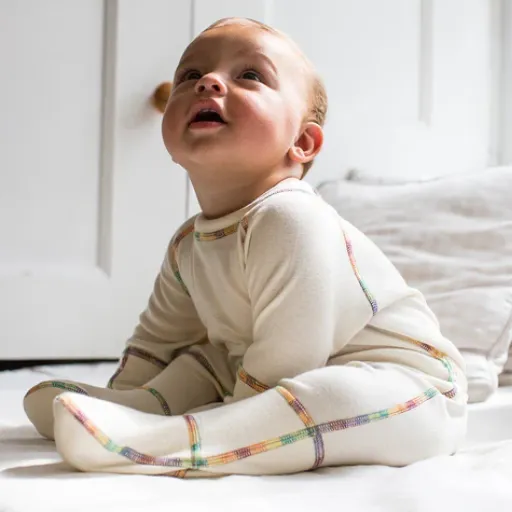
Deciphering Fabric Labels: What to Look For
When it comes to clothing and bedding for the little dear, the fabric label must be readable so that safety and comfort factors are ensured. Consider some notable issues when reading a fabric label:
- Material Composition:Look for labels that say natural fibers as in organic cotton, bamboo, or merino wool. Some of the latest studies show that organic cotton is the most highly advised fabric, as it does not include any harmful pesticides and chemicals so the chances of skin irritation and allergy are reduced. For instance, data collected by the Global Organic Textile Standard (GOTS) reveal a steep upward trend in the demand for certified organic fabrics, an indicator of awareness about the benefits.
- Avoidance of Harsh Chemicals:A little heads-up on the treatments with chemicals: fire retardants stain resistances and the like. While these may seem like good things to have, the treatments may contain formaldehyde or other harmful substances. Labels such as OEKO-TEX Standard 100 or GOTS Certified give assurance that the article was tested for harmful chemicals.
- Breathability and Moisture-Wicking:Fabrics labeled as breathable or moisture-wicking will prevent a baby from sweating or being chilly in change of temperature. Bamboo fibers are moisture-wicking and heat-regulating on their own – making it, therefore, an excellent choice for all seasons. According to studies, bamboo-based fabrics are capable of absorbing moisture 60% more than a lot of cotton blends.
- Hypoallergenic gorge:Terms such as “hypoallergenic” should be checked on labels, particularly if the baby has a sensitive skin. Research suggests that materials such as organic cotton and silk tend to be better tolerated by infants prone to eczema or any other type of skin disorder since these materials do not tend to trap irritants.
- Durability and Care Instructions:The wear resistance of the clothing and bedding for the baby goes a long way to ensure safekeeping. Look for labels bearing instructions which are straightforward to follow. The items should be machine washable and made up of durable natural fabrics for everyday usage. Furthermore, these fabrics could be pre-washed or shrink-resistant so that they are least likely to go out of size.
The act of reading the fabric label while selecting for good quality chemical-free fabrics ensures parents prioritize their babies’ health and comfort and ease of care at the same time.
Understanding Certifications: Importance of Oeko-Tex
The Oeko-Tex certifications are put in place to guarantee that textiles are safe and quality products, especially those being used for infants and for children. These certifications guarantee that the materials are tested for harmful substances and that only those materials that meet very strict standards are used, thus ensuring if not encouraging the health of those who come into contact with them. The substances allowed on the list undergo independent testing in order to ensure the safety of consumers and the fabrics in terms of adverse effects and environmental sustainability.
Oeko-Tex examines restricted substances such as pesticides, heavy metals, and formaldehyde, all of which could negatively impact human health. During certification, it is also ascertained that the production processes used maintain an environmentally friendly approach by limiting the usage of chemicals and minimizing the creation of wastes. Considering these factors, Oeko-Tex standards ever since have been upheld as a trustable mark for safety and sustainability.
Being Oeko-Tex certified can mean the difference between the protection of the baby against exposure to harmful substances. With this certification, one can concretely talk about textiles being safe and skin-friendly, ensuring comfort for the baby on one hand and supporting coherent manufacturing on the other. It is a very simple way to promote health and care for nature with each purchase.
Frequently Asked Questions (FAQ)
Q: Is polyester bad for babies?
A: In many cases, general opinion holds that polyester is an acceptable fabric to be used for babies, but some health risks are linked with synthetic fabrics, such as polyester. Polyester is used in many baby products because of its durability and acceptance in the market price-wise; however, it is vital to watch for any allergic reactions on the baby’s skin from such synthetic fabrics.
Q: What are the concerns with polyester?
A: Such concerns include its ability to cause irritation to sensitive skin, particularly for babies with an important medical condition such as eczema. Polyesters simply do not allow easy breathability as those natural ones, and such would cause suffering for the babies, mostly under warm weather conditions.
Q: Are there safer alternatives to using polyester for baby clothes?
A: Yes, bamboo fabrics for baby clothes are usually promoted as safer alternatives to polyester. They tend to be softer, more breathable, and less irritating to a baby’s skin-aorticulo making them the right choice for sensitive baby skin.
Q: Can polyester pajamas harm babies?
A: In principle, polyesters are fine for babies, providing that these items are free from flame retardants, which can be harmful. Always just to be safe, go for non-toxic baby items.
Q: Are recycled polyesters better for baby items?
A: Recycled polyesters, which have been made from recycled plastics, would be a better choice environmentally than virgin polyesters. In some ways, recycled polyesters are not all that different from their traditional counterparts, at least in terms of actual exposure to environmental hazards.
Q: How does polyester affect babies’ skin?
A: Sometimes polyester fibers can be an irritant to the skin of babies, especially those with sensitive skin. Watch how your baby responds to polyester items, and if there is an irritant reaction, try alternatives.
Q: Why is it such a popular fabric in baby items?
A: Polyester being highly resistant, easy to care for, and economical, is very popular in baby items. Yet, parents must also understand that it might cause discomfort or irritation for some babies.
Q: Should I avoid polyester altogether for my baby?
A: There is no need to avoid polyester altogether, but it is wise to be cautious and observe how your baby reacts. Look for good-quality polyester products and use natural fabrics where possible for anything touching your baby’s skin.
Q: Does polyester cause any long-term effects in case of use on babies?
A: More studies are needed to determine the long-term effects that polyester might have on babies. What is important right now is to select a fabric that does not hurt the skin and watch out for any discomfort your baby might experience due to sleeping on polyester or wearing polyester clothes.
References
-
Cuddle Sprouts – Is Polyester Safe for Babies? – Discusses why organic cotton is often a better choice than polyester for baby clothing and blankets.
-
AU Baby Shop – The Truth About Polyester – Highlights the toxic chemicals used in polyester production and potential health risks.
-
Treehouse Kids – The Hidden Risks of Polyester Clothing for Kids – Explores potential issues like skin irritation, rashes, and bacterial infections caused by polyester.
-
Cuddle Sprouts – Is Polyester Safe for Babies? – Provides insights into why parents might prefer safer and more eco-friendly fabrics over polyester.
-
AU Baby Shop – The Truth About Polyester – Reiterates the health concerns associated with polyester, including exposure to carcinogens.








